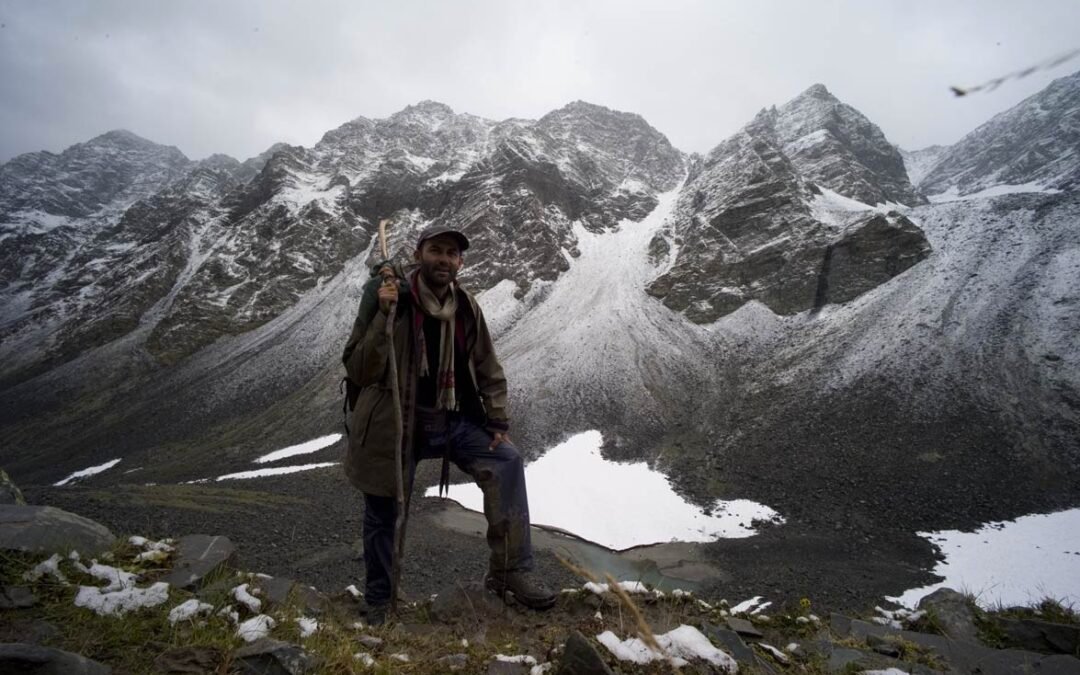Witness to Change: Reflections on the Indian Himalayas in a Warming World
By Russell Collins, Founder – Yak Trak Tours & Himalayan Rocket Stove
I first journeyed into the Indian Himalayas in the early 1990s, drawn by a fascination with mountain cultures, high-altitude landscapes, and the spiritual heart of the subcontinent. What began as a personal pilgrimage soon evolved into a vocation — I founded Yak Trak Tours in 1992, offering small group trekking experiences through Ladakh, Zanskar, Spiti, Kinnaur, and beyond. For over two decades, I had the privilege of walking some of the most spectacular trails on earth and introducing hundreds of travellers to the raw beauty and deep cultural resonance of these mountain regions.
But alongside the joy and wonder of those journeys, I began to witness a quieter, more unsettling story unfold — one that has now become impossible to ignore.
A Landscape in Transition
When I first started running tours, the weather in these regions was relatively predictable. Glaciers held firm. The roads — such as they were — were seasonal and often closed by snowfall for long stretches. Monsoons rarely reached the high desert plateaus of Ladakh or Spiti, and tree lines marked stable ecological boundaries.
Over the years, these patterns began to shift. Summers grew more erratic. I saw glacial melt accelerate, with formerly stable glaciers retreating noticeably year on year. Cloudbursts and flash floods, once rare at high altitude, became increasingly common. Landslides triggered by unseasonal rain started blocking roads that had previously been considered reliable, cutting off entire valleys for days or weeks at a time.
At the same time, infrastructure development surged — new roads were blasted through once-isolated valleys, often without proper slope stabilization or drainage planning. Tree felling went unchecked, and delicate alpine ecosystems were increasingly burdened by the pressures of tourism, construction, and a warming climate.
A Difficult Decision
By 2016, I had begun to feel uneasy about continuing to bring groups into these regions. Not only was the landscape changing, but the risks to my clients were no longer acceptable. Evacuation routes that had once been reliable were frequently blocked or washed out. Weather forecasts couldn’t be trusted. I could no longer, in good conscience, promise my guests the kind of experience I had built Yak Trak Tours upon — one grounded in safety, connection, and respectful access.
So I made the hard choice to stop running tours.
I had the luxury of stepping away — something the local communities of the Himalayas cannot afford.
For them, the Himalayas are not an adventure destination. They are home. And that home is becoming less safe, less predictable, and harder to live in with each passing season.
2025: The Most Extreme Year Yet
This year’s weather patterns in Himachal Pradesh and Ladakh — unseasonal snowfalls, widespread flooding, blocked roads, collapsing infrastructure — represent, in my view, a tipping point. I’ve never seen the region under such sustained stress. And while some might call it an anomaly, the trend is clear to those who’ve been paying attention: the Himalayas are on the frontlines of climate disruption.
This isn’t just about tourism or development. It’s about livelihoods, cultures, and ecosystems that have existed in balance for centuries, now thrown into disarray by a climate that is warming faster at altitude than in the lowlands.
What Comes Next?
Although I no longer run tours, I remain deeply engaged with the Himalayas through my work with Himalayan Rocket Stove, a social enterprise dedicated to clean combustion and sustainable heating solutions for cold climate regions. Part of this mission is to reduce black carbon emissions — a key contributor to glacial melt — and to promote resilience in the face of a rapidly changing environment.
But we need to go further.
We need better policy, smarter infrastructure, genuine local consultation, and greater climate awareness — not just among those who live in the mountains, but among those who visit, fund, and govern them.
A Final Word
If you’ve ever travelled in the Indian Himalayas — or dreamed of doing so — know that what you are witnessing is not just natural beauty, but a fragile balance under threat. We all have a role to play in how these regions adapt to the future. And for those of us who have been privileged to walk these trails, it’s time to become advocates, not just admirers.
The mountains are calling — and this time, they are asking for help.


Recent Comments